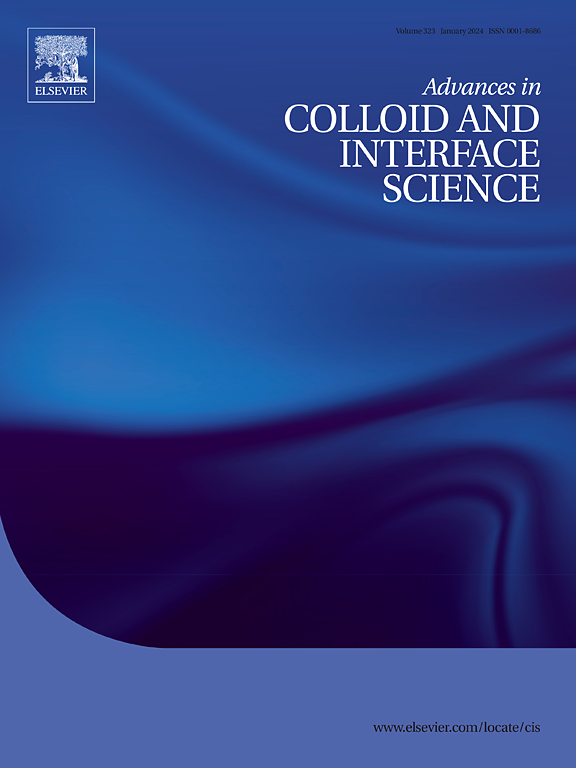Biobased collectors for sustainable phosphate ore flotation: Enhanced performance and selectivity
IF 15.9
1区 化学
Q1 CHEMISTRY, PHYSICAL
引用次数: 0
Abstract
Diverse collectors are employed in mineral flotation; they are categorized into distinct families distinguished by a particular characteristic that enables their adsorption onto a given mineral. All these collectors are designed to increase the hydrophobicity of a mineral's surface to improve its floatability and separation in the froth flotation process. Phosphate ore enrichment using flotation has long utilized anionic collectors in the form of synthetic fatty acids derived from petrolic raw materials. This nonrenewable material has several disadvantages, including lack of biodegradability, possible toxicity and difficult conditions of use. This paper aims to explore the effect of eco-friendly and promising alternatives that can substitute the conventional collectors and introduce some new non-toxic reagents into the flotation additives industry. For this purpose, the different compounds used as biobased collectors are examined and their performance is evaluated, relying on some fundamental studies and flotation tests. The adsorption behavior and efficiency of these compounds are assessed based on the analysis of previous zeta potential measurements, Fourier transform infrared spectra, adsorption tests, contact angle determinations, and flotation test findings. Selectivity of the collector is a key factor in determining the effectiveness of this reagent. Therefore, this review discusses the main factors affecting the selectivity of biobased collectors toward phosphate ore minerals. Additionally, the different strategies to improve this selectivity are emphasized. Lastly, a comparison of the performance of biobased collectors to conventional reagents is established with the aim of determining their main advantages and disadvantages.

可持续磷矿浮选的生物基捕收剂:增强性能和选择性
矿物浮选采用多种捕收剂;它们被分为不同的科,其特征使它们能够吸附在给定的矿物上。所有这些捕收剂都是为了增加矿物表面的疏水性,以提高其在泡沫浮选过程中的可浮性和分离性。长期以来,磷矿浮选富集一直采用从石油原料中提取的合成脂肪酸作为阴离子捕收剂。这种不可再生的材料有几个缺点,包括缺乏生物降解性,可能的毒性和使用条件困难。本文旨在探索生态友好、有前景的浮选助剂替代传统捕收剂的效果,并为浮选助剂行业引入一些新的无毒助剂。为此,根据一些基础研究和浮选试验,研究了用作生物基捕收剂的不同化合物,并评估了它们的性能。根据之前的zeta电位测量、傅里叶变换红外光谱、吸附测试、接触角测定和浮选测试结果分析,评估了这些化合物的吸附行为和效率。捕收剂的选择性是决定该试剂有效性的关键因素。因此,本文就影响生物基捕收剂对磷矿物选择性的主要因素进行了综述。此外,还强调了提高这种选择性的不同策略。最后,对生物基捕集剂与常规试剂的性能进行了比较,以确定其主要优点和缺点。
本文章由计算机程序翻译,如有差异,请以英文原文为准。
求助全文
约1分钟内获得全文
求助全文
来源期刊
CiteScore
28.50
自引率
2.60%
发文量
175
审稿时长
31 days
期刊介绍:
"Advances in Colloid and Interface Science" is an international journal that focuses on experimental and theoretical developments in interfacial and colloidal phenomena. The journal covers a wide range of disciplines including biology, chemistry, physics, and technology.
The journal accepts review articles on any topic within the scope of colloid and interface science. These articles should provide an in-depth analysis of the subject matter, offering a critical review of the current state of the field. The author's informed opinion on the topic should also be included. The manuscript should compare and contrast ideas found in the reviewed literature and address the limitations of these ideas.
Typically, the articles published in this journal are written by recognized experts in the field.

 求助内容:
求助内容: 应助结果提醒方式:
应助结果提醒方式:


